Rufous Sibia
The rufous sibia (Heterophasia capistrata) is a species of bird in the family Leiothrichidae. It feeds on berries and insects. It is found in the northern parts of the Indian subcontinent, ranging across India, Nepal and Bhutan. Its natural habitat is the temperate forests of the Lower to Middle Himalayas. The species has an unmistakable appearance with its rufous-dominated colouration and black head, and is often seen with its crest raised. It is a vigorous, melodious singer.
Black and Yellow Grosbeak
The black-and-yellow grosbeak (Mycerobas icterioides) is a species of finch native to the northern parts of the Indian subcontinent, primarily the lower and middle Himalayas. It is in the family Fringillidae. The species ranges across Afghanistan, India, Nepal, and Pakistan where its natural habitat is temperate forests.

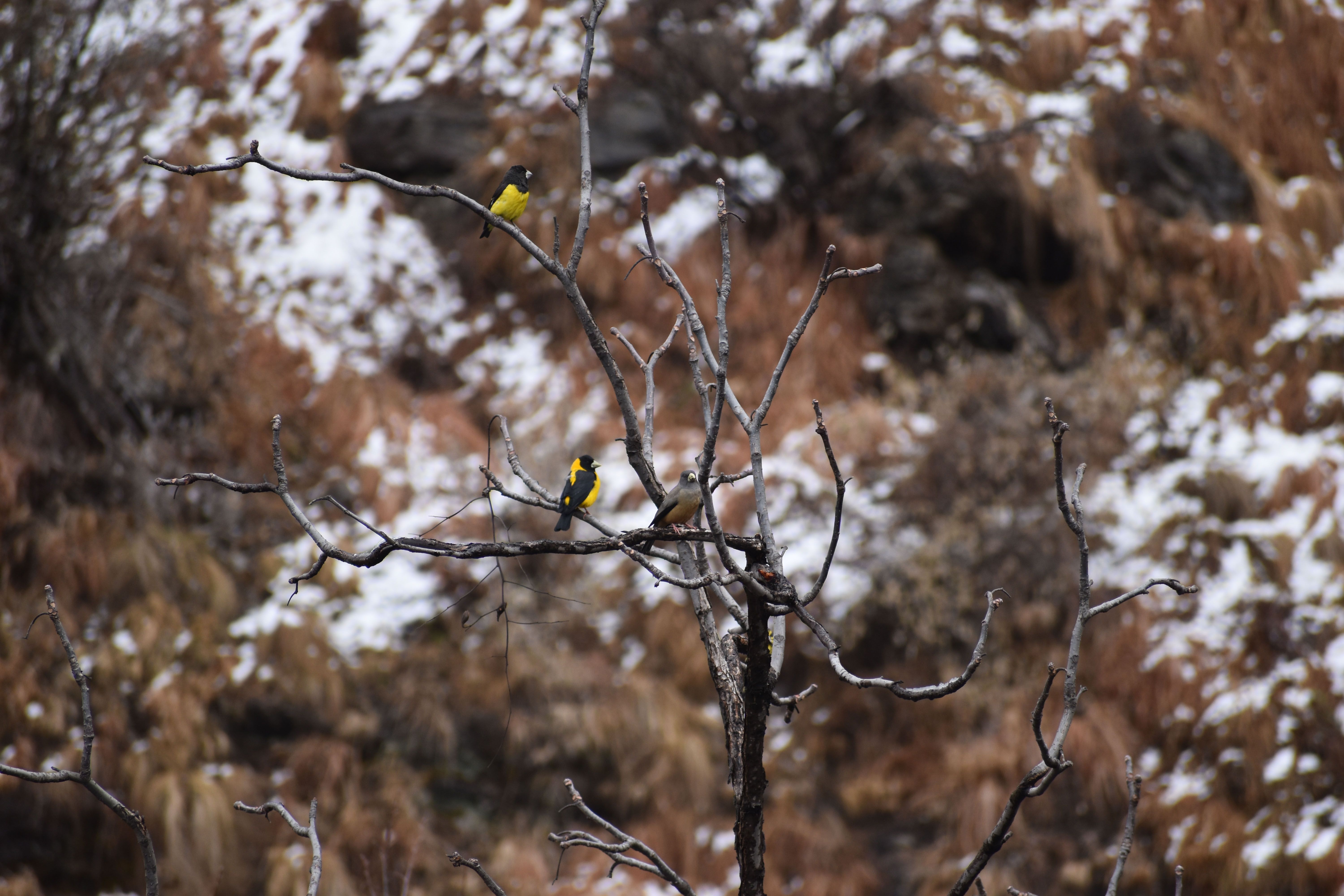
Himalayan Woodpecker
The Himalayan woodpecker (Dendrocopos himalayensis) is a species of bird in the family Picidae. It is found in the northern regions of the Indian subcontinent, primarily the Himalayas and some adjoining areas, and ranges across Afghanistan, India, Nepal, Bhutan and Pakistan. Its natural habitats are boreal forests and temperate forests.
Blue whistling thrush
The blue whistling thrush (Myophonus caeruleus) is a whistling thrush that is found in the mountains of Central Asia, China and Southeast Asia. It is known for its loud human-like whistling song at dawn and dusk. The widely distributed populations show variations in size and plumage with several of them considered as subspecies. Like others in the genus, they feed on the ground, often along streams and in damp places foraging for snails, crabs, fruits and insects.


Ashy Drongo
The Ashy drongo (Dicrurus leucophaeus) is a species of bird in the drongo family Dicruridae. It is found widely distributed across South and Southeast Asia with several populations that vary in the shade of grey, migration patterns and in the size or presence of white patches around the eye. The adult ashy drongo is mainly dark grey, and the tail is long and deeply forked, There are a number of subspecies varying in the shade of the grey plumage. Some subspecies have white markings on the head. Young birds are dull brownish grey.
Black Bulbul
The black bulbul (Hypsipetes leucocephalus), also known as the Himalayan black bulbul or Asian black bulbul, is a member of the bulbul family of passerine birds. It is found in southern Asia from India east to southern China. It is the type species of the genus Hypsipetes, established by Nicholas Aylward Vigors in the early 1830s.[2] There are a number of subspecies, mostly varying in the shade of the body plumage which ranges from grey to black, and some also occur in white-headed morphs, as also suggested by its specific epithet leucocephalus, literally "white head". The legs and bill are always rich orange-red.


Himalayan Bulbul
The Himalayan bulbul is considered to belong to a superspecies along with the white-eared bulbul, white-spectacled bulbul, African red-eyed bulbul, Cape bulbul, and common bulbul. The alternate name, white-cheeked bulbul, is also used by the white-eared bulbul.
The Himalayan bulbul is about 18 cm in length, with a wingspan of 25.5–28 cm and an average weight of 30 g. Its head, throat, and crest are black and white. The back, side, and lengthy tail are brown, the underside is pale yellow. Sexes have similar plumage. The song is a beautiful 4-piece whistle, which resembles an accelerated oriole whistle.
Indian /Oriental white eye
The Indian white-eye (Zosterops palpebrosus), formerly the Oriental white-eye, is a small passerine bird in the white-eye family. It is a resident breeder in open woodland on the Indian subcontinent. They forage in small groups, feeding on nectar and small insects. They are easily identified by the distinctive white eye-ring and overall yellowish upperparts. The range previously extended eastwards to Southeast Asia, Indonesia and Malaysia but when the taxa in these regions were assigned to other species, the English name was changed.
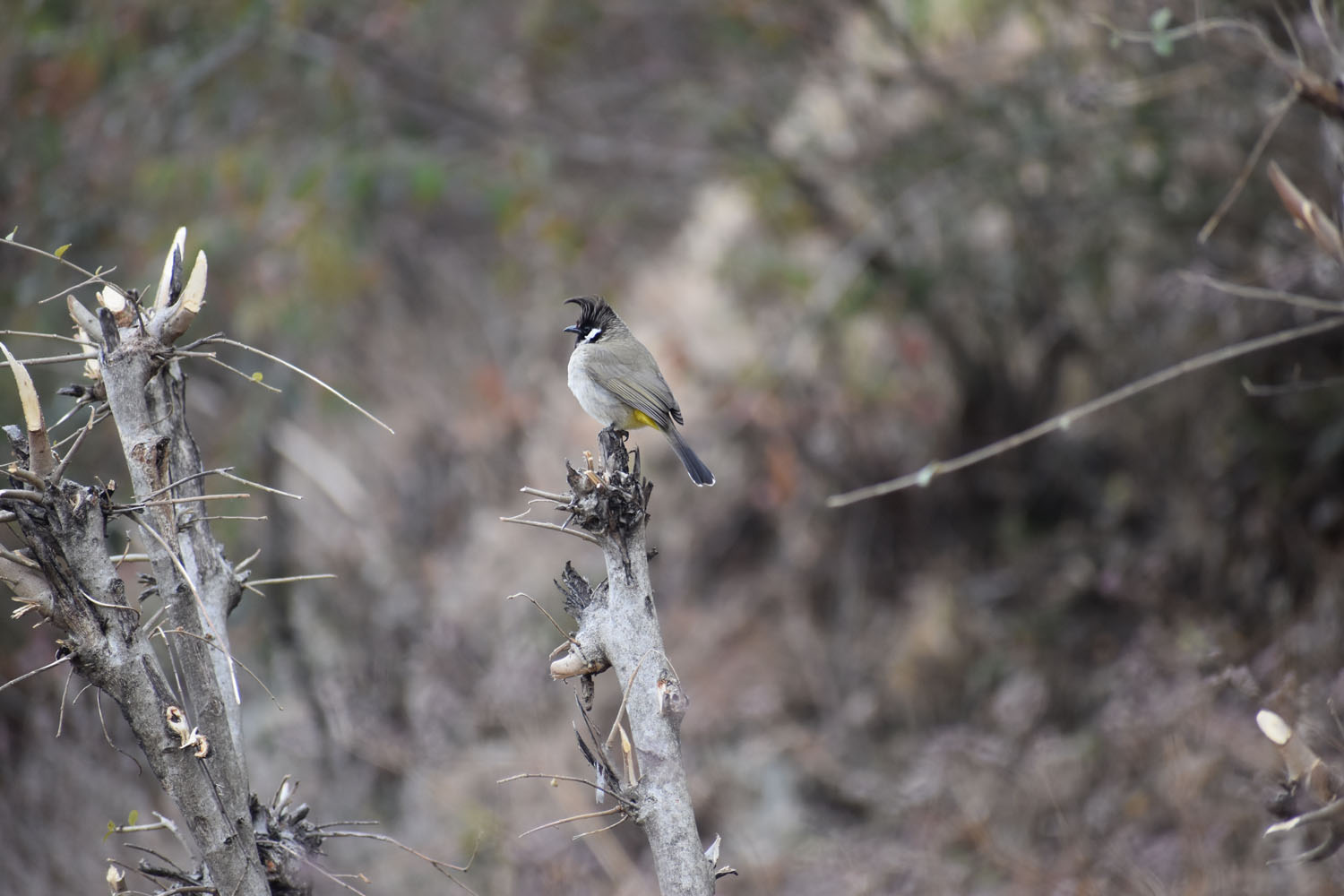
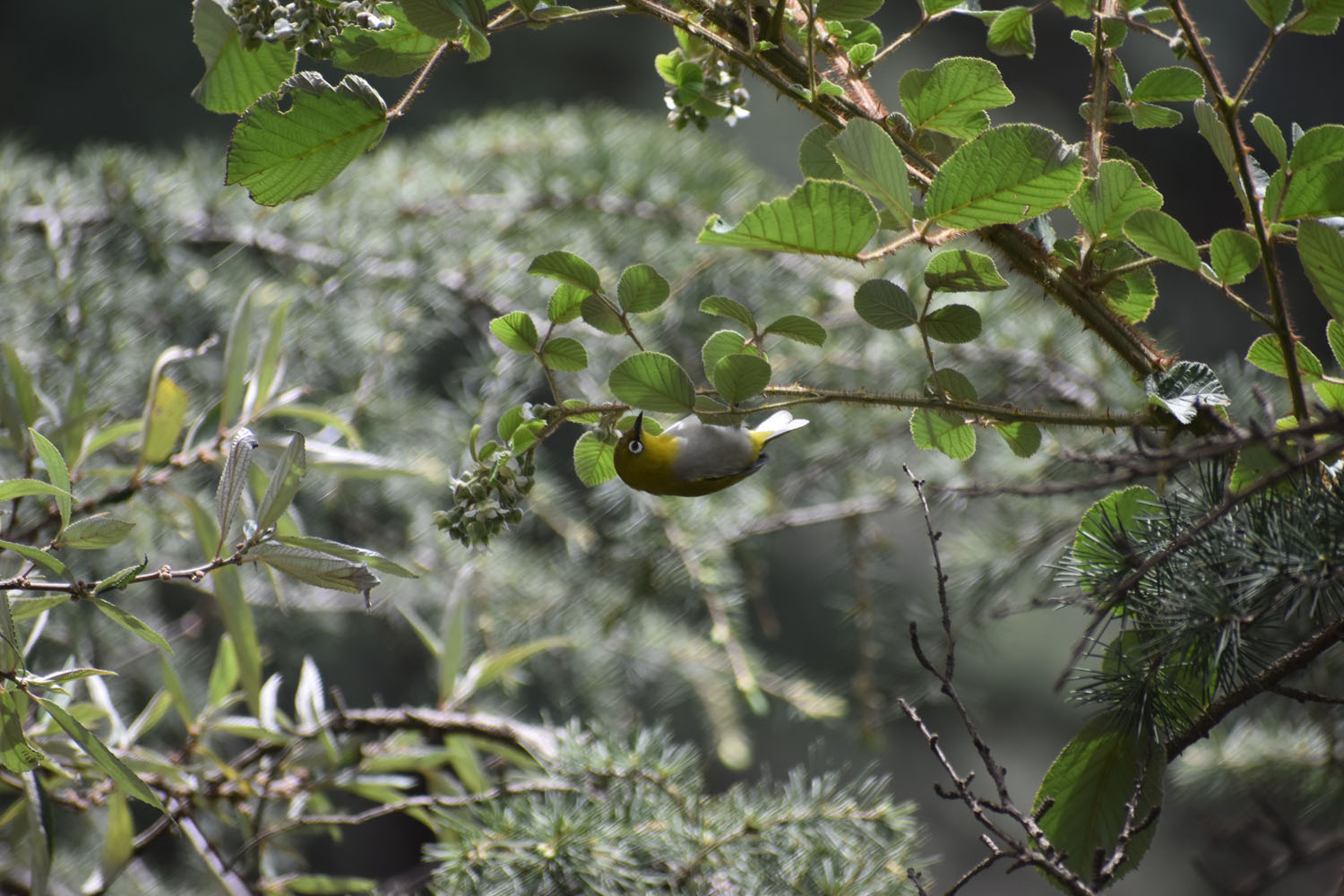
Black-throated bushtit
The black-throated bushtit is a small passerine, around 10.5 cm long and weighing 4-9 g.There is considerable racial variation in the plumage, but all subspecies have a medium length tail (as opposed to the long tail of the related long-tailed tit), a black throat and a black 'bandit mask' around the eye. The nominate race has a chestnut cap, breast band and flanks and dark grey back, wings and tail, and a white belly. The other subspecies have generally the same pattern (minus the chest band) but with grey caps or all grey bellies and flanks. Both sexes are alike.
Whiskered yuhina
The whiskered yuhina (Yuhina flavicollis) is a bird species in the white-eye family Zosteropidae. Its range extends across the Himalayan forests in northern India to northeast Indian states, Nepal, Bhutan, Bangladesh and in the east to Indochina including Laos, Myanmar, Thailand, and Vietnam.
Its natural habitat is subtropical or tropical moist montane forests. The whiskered yuhina is sometimes found in mixed hunting parties with other yuhina and fulvetta species,[3] but it has also been reported to not associate with mixed hunting parties in some areas.[4] It is described as one of the commonest yuhinas in the Himalayas, although it is relatively uncommon to rare at low elevations.[2] It prefers relatively undisturbed closed canopy cover.[5] It is one among several other birds hunted by livestock herders in Northeast India.


Variegated laughing thrush
The variegated laughingthrush (Trochalopteron variegatum) is a species of bird in the family Leiothrichidae. It is endemic to the northern regions of the Indian subcontinent, primarily the low-to-mid altitudes of the Himalayas. It ranges across Bhutan, India, Nepal and Tibet.
Russet sparrow
The russet sparrow (Passer cinnamomeus), also called the cinnamon or cinnamon tree sparrow, is a passerine bird of the sparrow family Passeridae. A chunky little seed-eating bird with a thick bill, it has a body length of 14 to 15 cm (5.5–5.9 in). Its plumage is mainly warm rufous above and grey below. It exhibits sexual dimorphism, with the plumage of both sexes patterned similarly to that of the corresponding sex of house sparrow. Its vocalisations are sweet and musical chirps, which when strung together form a song.

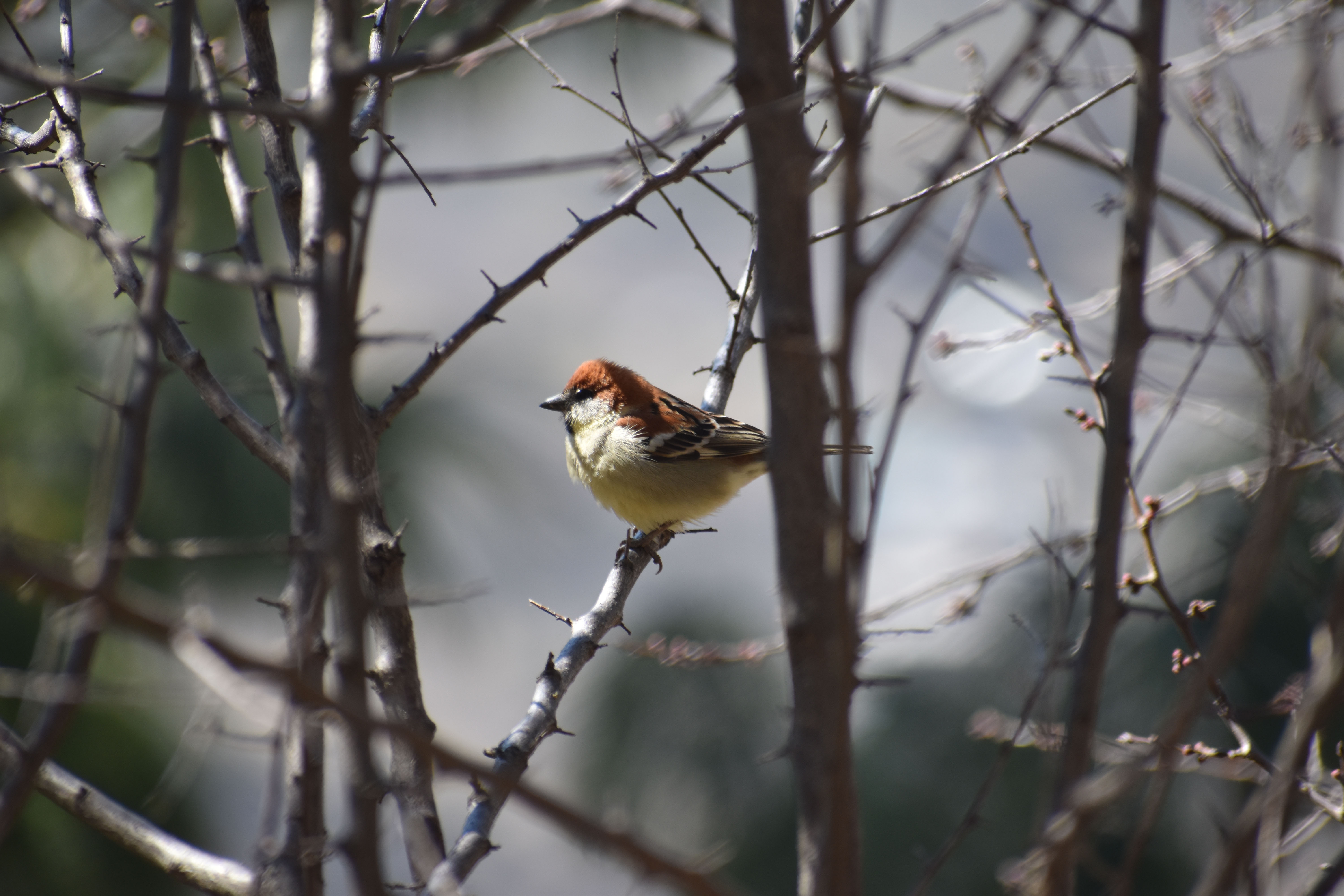
Great barbet
The great barbet (Psilopogon virens) is an Asian barbet native to the Indian sub-continent and Southeast Asia, where it inhabits foremost forests up to 3,000 m (9,800 ft) altitude. It has been listed as Least Concern on the IUCN Red List since 2004 because of its wide distribution. The great barbet has a blue head, large yellow bill, brown and green-streaked body, belly and a red vent. The plumage is green. It is the largest barbet species with a body length of 32–35 cm (13–14 in) and a weight of 192–295 g (6.8–10.4 oz)
Red-billed leiothrix
The red-billed leiothrix (Leiothrix lutea) is a member of the family Leiothrichidae, native to southern China and the Himalayas. Adults have bright red bills and a dull yellow ring around their eyes. Their backs are dull olive green, and they have a bright yellow-orange throat with a yellow chin; females are somewhat duller than males, and juveniles have black bills.


Great Tit
The great tit (Parus major) is a passerine bird in the tit family Paridae. It is a widespread and common species throughout Europe, the Middle East, Central and Northern Asia, and parts of North Africa where it is generally resident in any sort of woodland; most great tits do not migrate except in extremely harsh winters. Until 2005 this species was lumped with numerous other subspecies. DNA studies have shown these other subspecies to be distinctive from the great tit and these have now been separated as two distinct species, the cinereous tit of southern Asia, and the Japanese tit of East Asia.
Common Rosefinch
In a molecular phylogenetic study of the finch family published in 2012, Zuccon and colleagues found that the common rosefinch fell outside the core Carpodacus rosefinch clade and was a sister to the scarlet finch (at the time Haematospiza sipahi). They recommended that the common rosefinch should be moved to a new monotypic genus with the resurrected name of Erythrina. The British Ornithologists' Union accepted this proposal,[3] but the International Ornithological Union chose instead to adopt a more inclusive Carpodacus that retained the common rosefinch in the rosefinch genus.
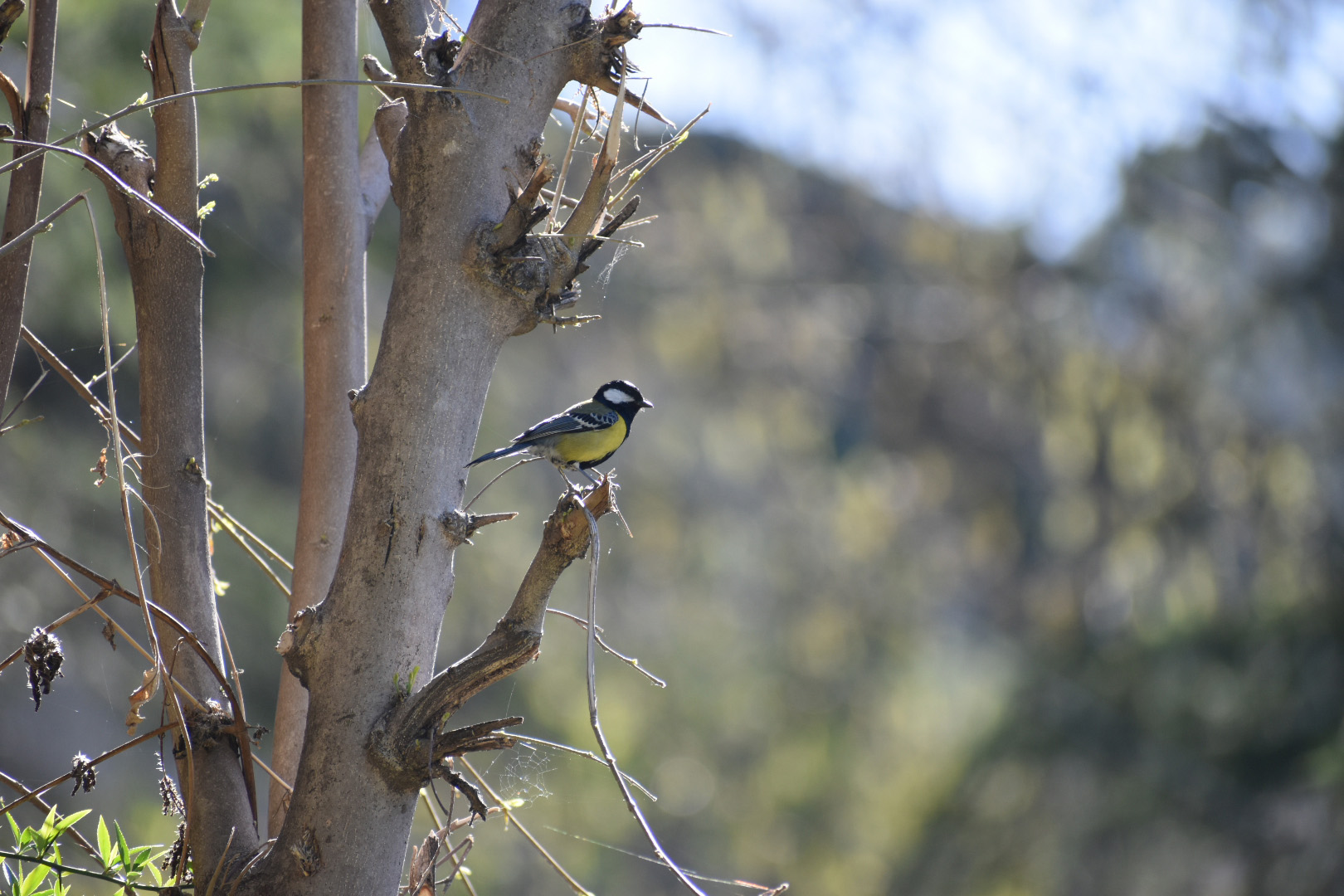

Verditer Flycatcher
The verditer flycatcher (Eumyias thalassinus) is an Old World flycatcher It is found from the Himalayas through Southeast Asia to Sumatra. This species is named after its distinctive shade of copper-sulphate blue and has a dark patch between the eyes and above the bill base. The adult males are intense blue on all areas of the body, except for the black eye-patch and grey vent. Adult females and sub-adults are lighter blue.
Yellow-breasted greenfinch
The yellow-breasted greenfinch (Chloris spinoides) is a small passerine bird in the family Fringillidae that Is native to the northern regions of the Indian subcontinent. The yellow-breasted greenfinch is 12–14 cm (4.7–5.5 in) in length and weighs between 15 and 21 g (0.53 and 0.74 oz). It has a brown conical bill and bright yellow wing bars. The underparts are bright yellow. The sexes have similar plumage but the female is less brightly colored.
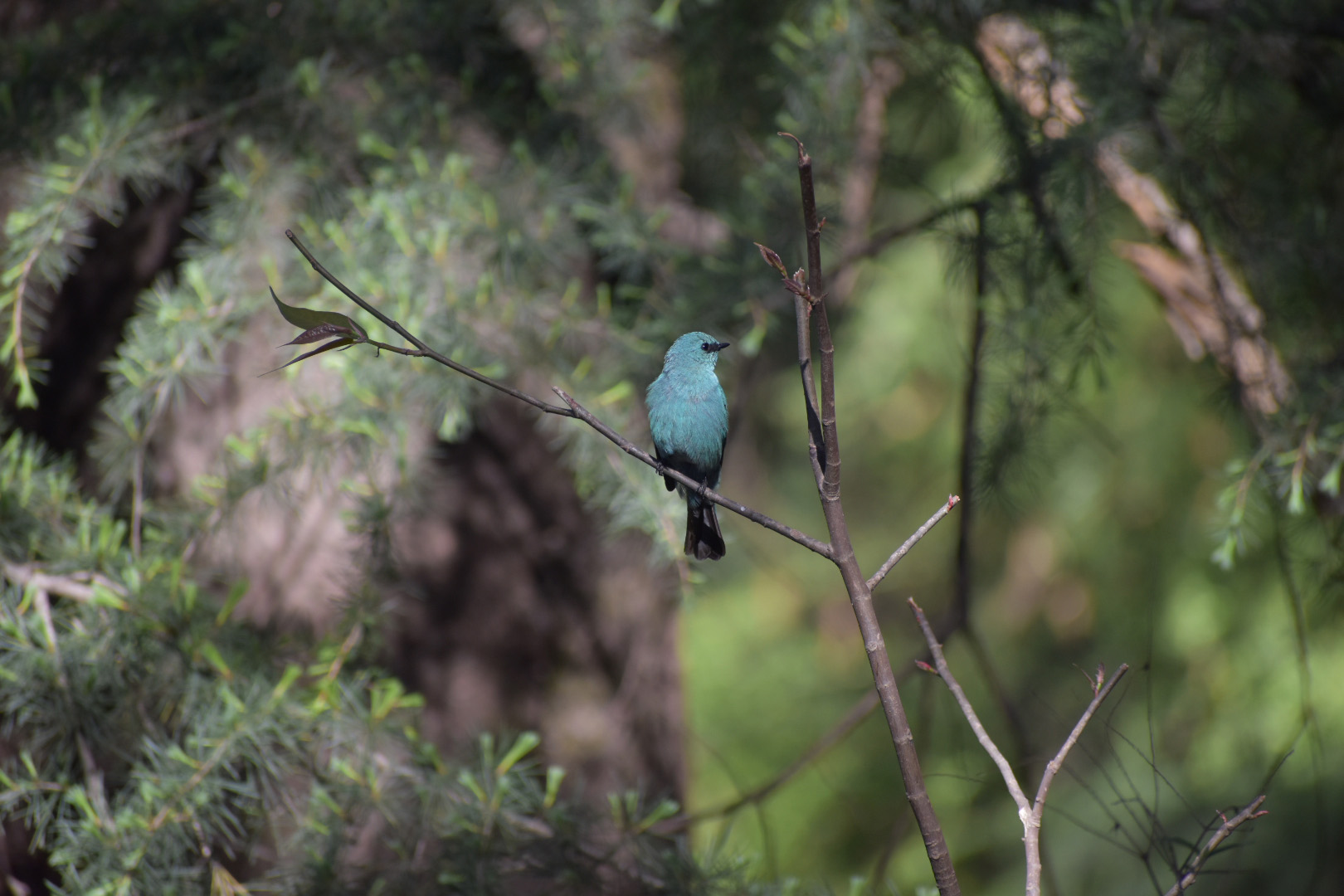

Black-Naped woodpecker
The black-naped woodpecker (Picus canus guerini) is a bird in the family Picidae. It has a large range, being found in the Himalayas from northern Pakistan through northern India, Nepal and Bhutan into southern, central and eastern China, Taiwan, Bangladesh, Myanmar and Southeast Asia. it was a subspecies of grey-headed woodpecker (Picus canus).
Grey Treepie
The grey treepie, also known as the Himalayan treepie, (Dendrocitta formosae) is an Asian treepie, a medium-sized and long-tailed member of the crow family. They are widely distributed along the foothills of the Himalayas in the Indian Subcontinent and extending into Indochina, southern mainland China and Taiwan. The populations vary in plumage and several are named as subspecies. They sometimes take part in mixed species flocks with laughingthrushes, especially the white-throated laughingthrush.
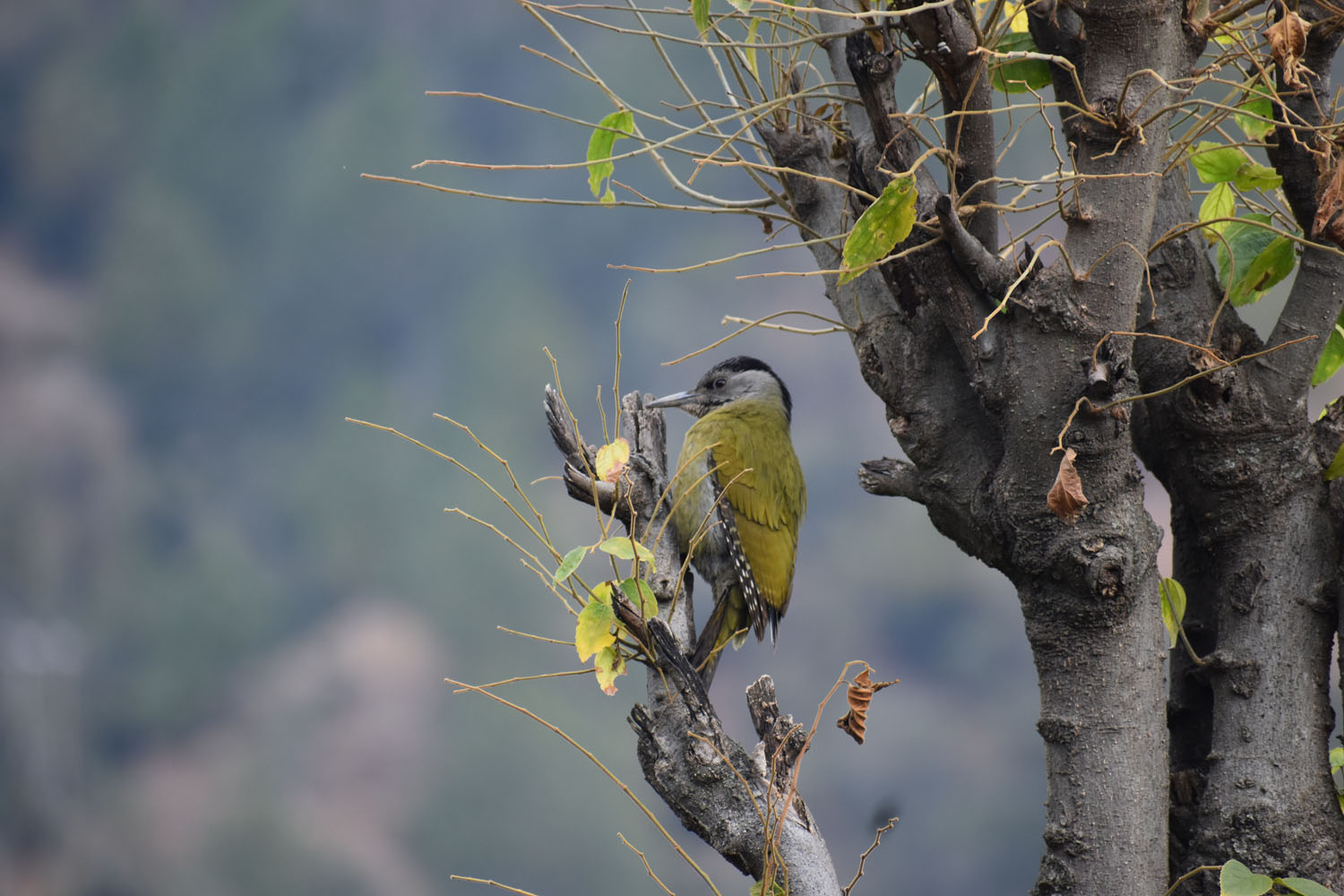
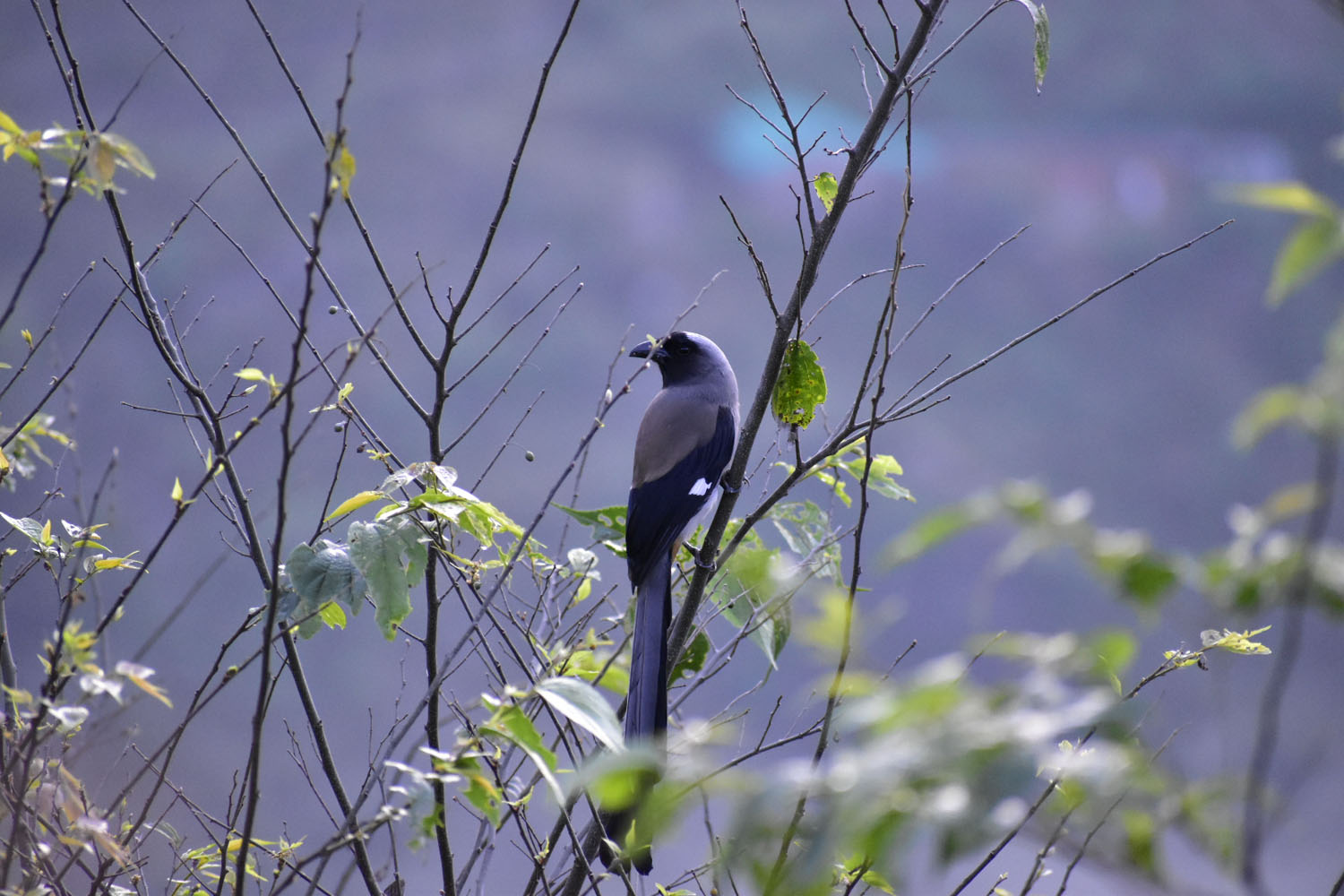
Streaked laughing thrush
The streaked laughingthrush (Trochalopteron lineatum) is a species of bird in the family Leiothrichidae. It is commonly found in the northern regions of the Indian subcontinent and some adjoining areas, ranging across Afghanistan, Bhutan, India, Nepal, Pakistan, Russia, and Tajikistan.
American Robin
The American robin (Turdus migratorius) is a migratory songbird of the true thrush genus and Turdidae, the wider thrush family. It is named after the European robin[2] because of its reddish-orange breast, though the two species are not closely related, with the European robin belonging to the Old World flycatcher family.


Rufous-naped tit
The rufous-naped tit (Periparus rufonuchalis), also known as the black-breasted tit or dark-grey tit, is an Asian songbird species in the tit and chickadee family (Paridae). It was sometimes considered conspecific with the rufous-vented tit (P.rubidiventris), and was formerly placed in the genus Parus. This tit is a native of the western Himalayas, but has a very large range, occurring in parts of India, China, Pakistan, Turkestan, Kyrgyzstan, and Afghanistan.
Hill Pigeon
The hill pigeon is a stout-bodied pigeon, similar in size and general appearance to the rock pigeon, but mainly differentiated by its tail pattern which consist of a broad, white tail-band across the black tail. Other differences include a paler mantle and upper wings and a white patch on the back. In flight, the tail pattern is similar to the snow pigeon, but lacks the contrast between the head and neck in that species.
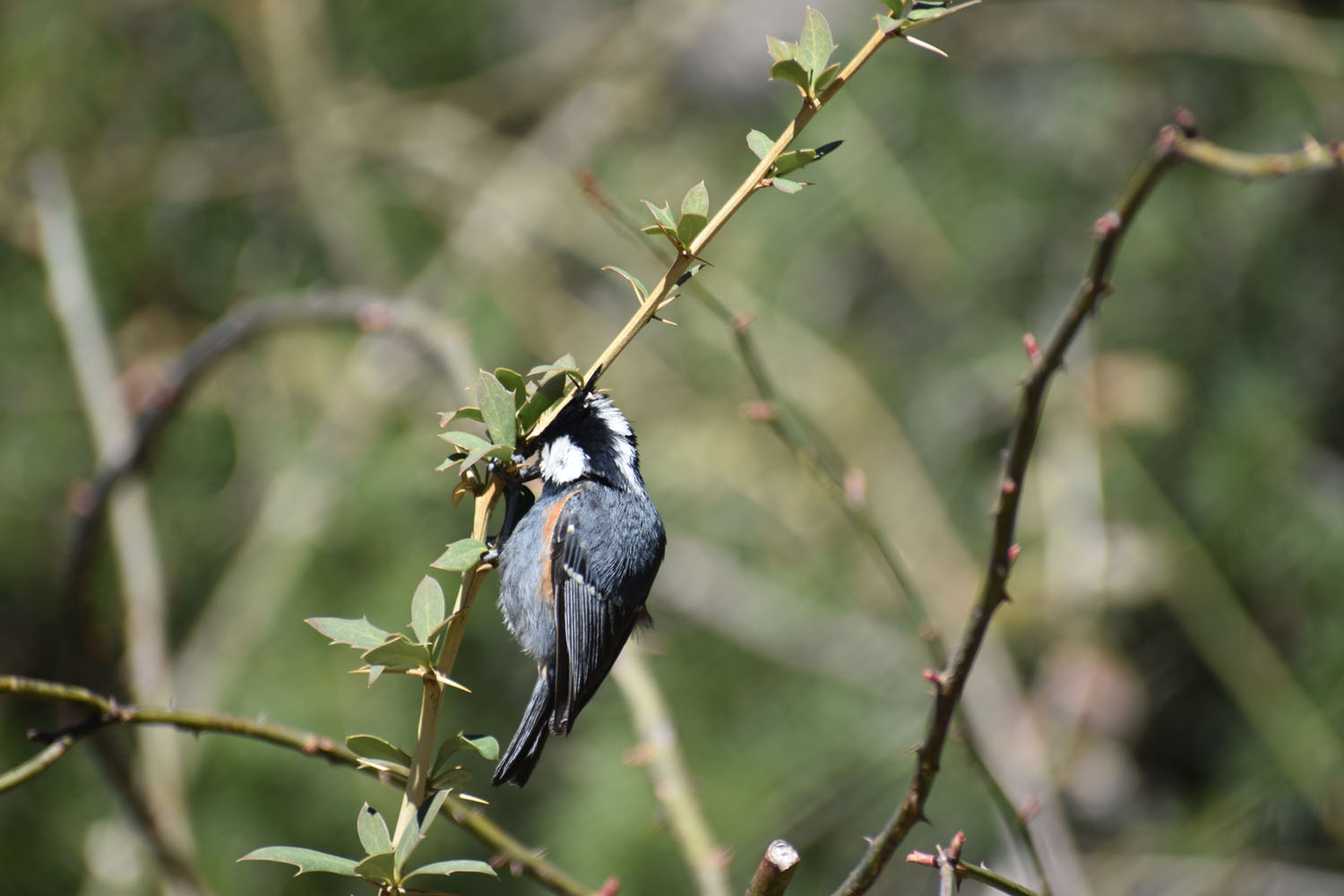

Yellow Billed Blue Magpie
The yellow-billed blue magpie or gold-billed magpie (Urocissa flavirostris) is a passerine bird in the crow and jay family, Corvidae. It forms a superspecies with the Taiwan blue magpie and the red-billed blue magpie. The species range across the northern parts of the Indian Subcontinent including the lower Himalayas, with a disjunct population in Vietnam.
Rosy Minivet
The rosy minivet (Pericrocotus roseus) is a species of bird in the family Campephagidae. The male is distinguished from other minivets by having a deep pink/light red shade in wings and tail and the female having an olive/olive yellow rump as against bright yellow in other minivets. Both male and female are grey above.


Grey Bush chat
The grey bush chat (Saxicola ferreus) is a species of passerine bird in the family Muscicapidae. It is found in the Himalayas, southern China, Taiwan, Nepal and mainland Southeast Asia.[1] Its natural habitats are subtropical or tropical moist lowland forest and subtropical or tropical moist montane forest.
Male

Female
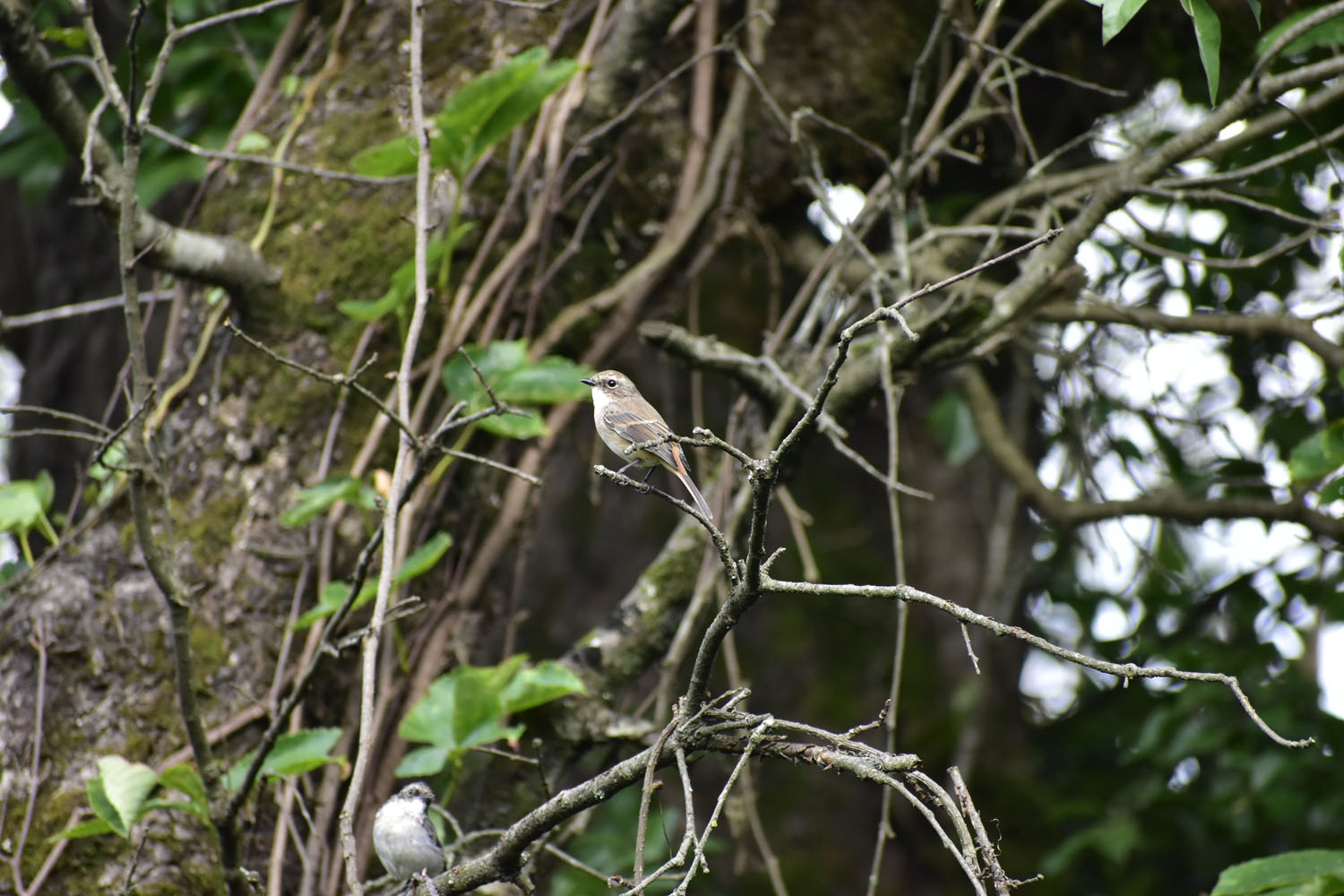
Spotted Dove
The spotted dove (Spilopelia chinensis) is a small and somewhat long-tailed pigeon that is a common resident breeding bird across its native range on the Indian subcontinent and Southeast Asia. The species has been introduced into many parts of the world and feral populations have become established.
This species was formerly included in the genus Streptopelia with other turtle-doves, but studies suggest that they differ from typical members of that genus. This dove is long tailed buff brown with a white-spotted black collar patch on the back and sides of the neck. The tail tips are white and the wing coverts have light buff spots.
Blue Throated Barbet
The blue-throated barbet (Psilopogon asiaticus) is an Asian barbet having bright green, blue & red plumage, seen across the Indian subcontinent and Southeast Asia. Barbets and toucans are a group of near passerine birds with a worldwide tropical distribution. The barbets get their name from the bristles which fringe their heavy bills; this species eats fruits and insects. They frequent evergreen forests, deciduous forests, gardens, orchards, teak forests and cities with fruiting trees. The turquoise-throated barbet was formerly considered a subspecies.
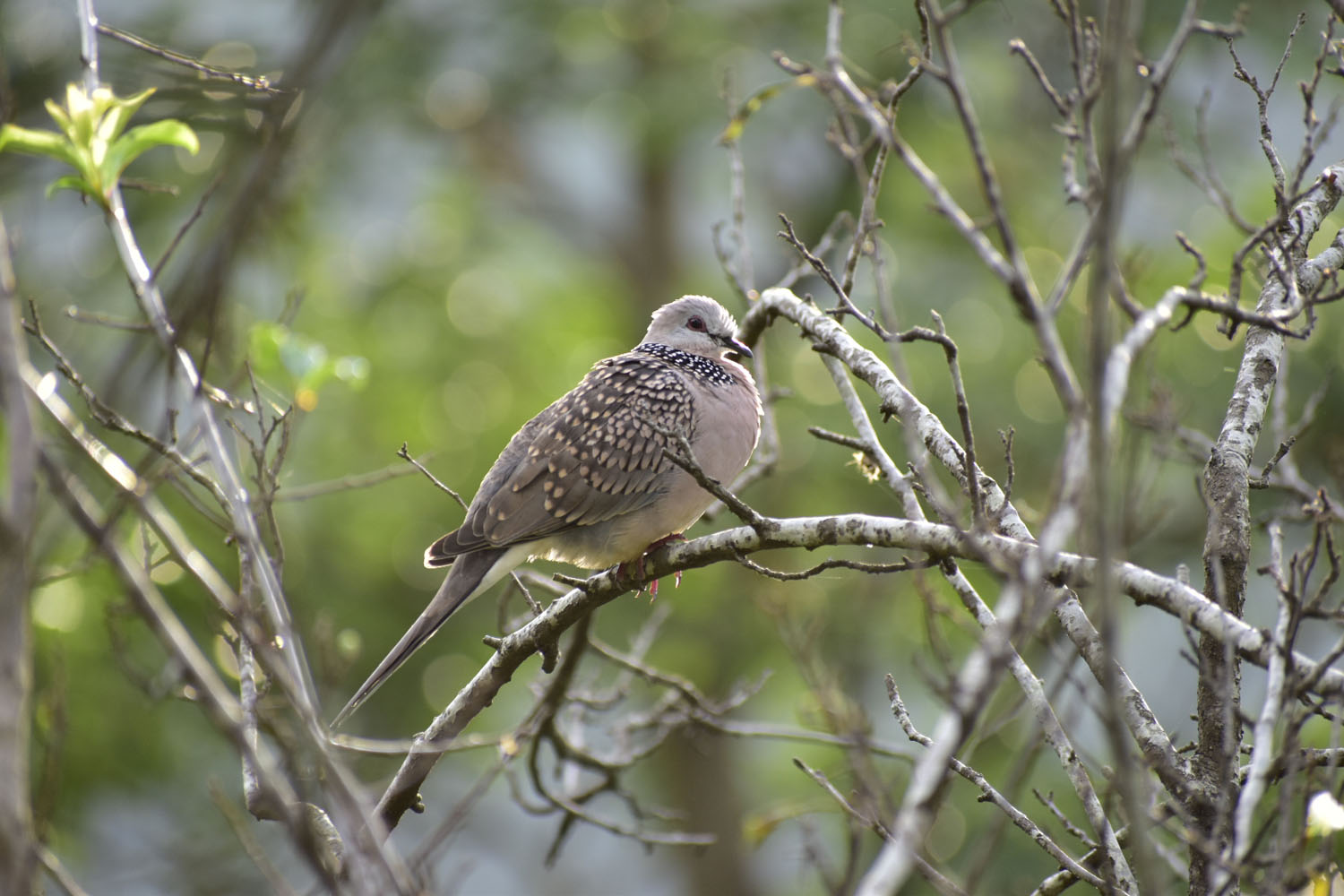

Grey Tit
The grey tit (Melaniparus afer) is a species of bird in the family Paridae. It is found in Lesotho and South Africa. Its natural habitats are subtropical or tropical dry shrubland and Mediterranean-type shrubby vegetation.
The grey tit was formerly one of the many species in the genus Parus but was moved to Melaniparus after a molecular phylogenetic analysis published in 2013 showed that the members of the new genus formed a distinct clade.
Comman Mayna
The common myna or Indian myna (Acridotheres tristis), sometimes spelled mynah,[2] is a member of the family Sturnidae (starlings and mynas) native to Asia. An omnivorous open woodland bird with a strong territorial instinct, the myna has adapted extremely well to urban environments.
The range of the common myna is increasing at such a rapid rate that in 2000 the IUCN Species Survival Commission declared it one of the world's most invasive species and one of only three birds in the top 100 species that pose an impact to biodiversity, agriculture and human interests.
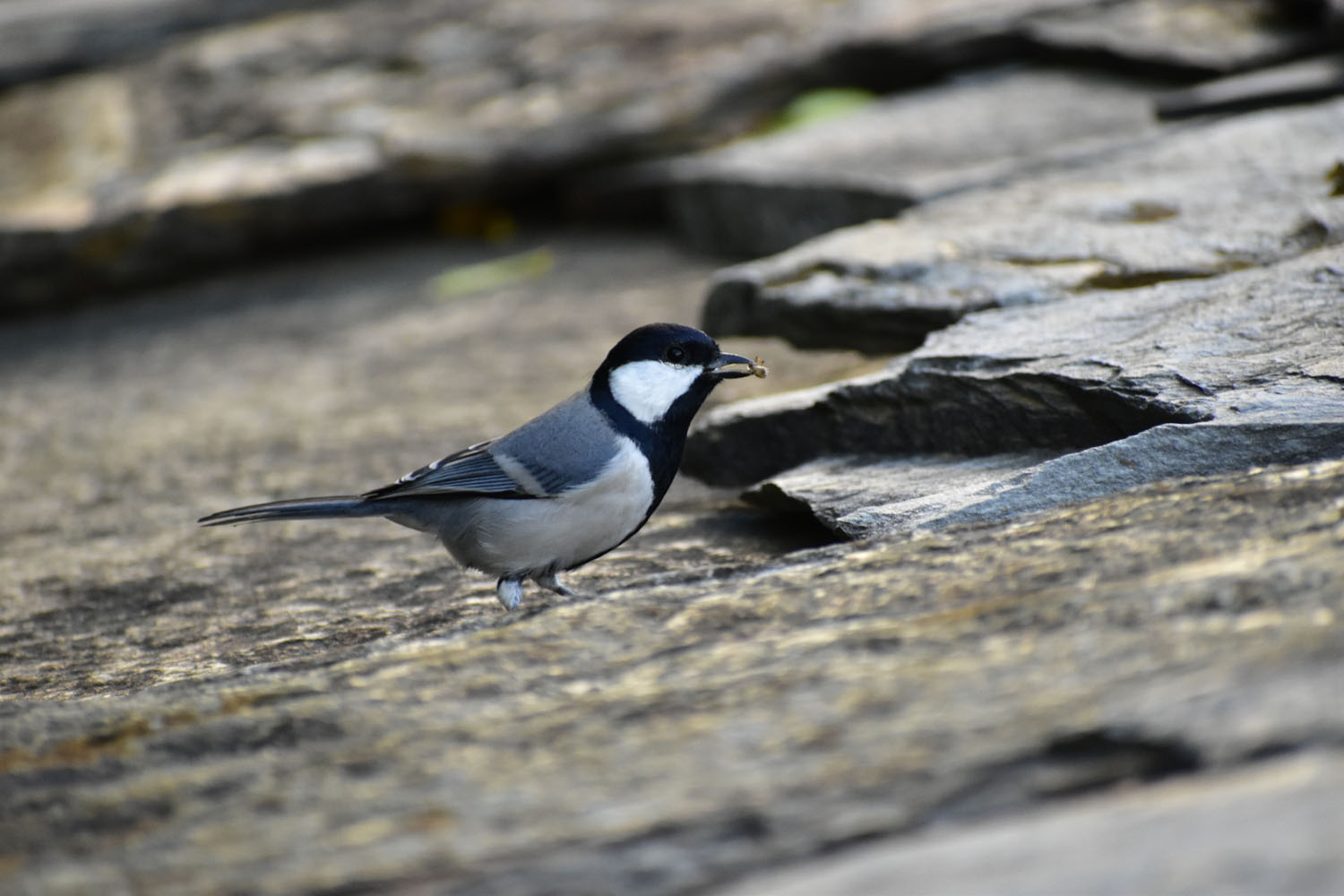

Asian Barred Owlet
The Asian barred owlet (Glaucidium cuculoides) is a species of true owl, resident in northern parts of the Indian Subcontinent and parts of Southeast Asia. It ranges across north central and northeast India, Nepal Bhutan, north Bangladesh, and southeast Asia (Myanmar, Thailand, Cambodia, Laos, Vietnam). Its natural habitat is temperate forest.
Plum-headed parakeet
The plum-headed parakeet (Psittacula cyanocephala) is a parrot in the family Psittacidae. It is endemic to the Indian Subcontinent and was once thought to be conspecific with the blossom-headed parakeet (Psittacula roseata) but was later elevated to a full species. Plum-headed parakeets are found in flocks, the males having a pinkish purple head and the females, a grey head. They fly swiftly with twists and turns accompanied by their distinctive calls.


Spotted Forktail
The spotted forktail (Enicurus maculatus) is a species of bird in the family Muscicapidae. It is found in the Himalayas and the hills of Northeast India, Bangladesh, Myanmar, and southern China including Yunnan.[1] Birds of this species are 25 cm with a long tail. The sexes are alike, having a white forehead and a black crown and nape, a black back spotted white, and a broad white wing bar. The tail is deeply forked, graduated black and white. The white spotted back easily identifies this species from other similar sized forktail. Its call is a shrill, screechy KREE, mostly given in flight; it also makes some shrill, squeaky notes while perched. It breeds mostly at 1200–3600 m, and descends to about 600 m in winter. Its natural habitat is subtropical or tropical moist montane forests, where it is found in boulder-strewn torrents, forest streams, and roadside canals.
Green Backed Tit
The green-backed tit (Parus monticolus) is a species of bird in the family Paridae. It is found in Bangladesh, Bhutan, China, India, Laos, Burma, Nepal, Pakistan, Taiwan and Vietnam. Its natural habitats are boreal forest, temperate forest, and subtropical or tropical moist lowland forest


Rock Bunting
The rock bunting (Emberiza cia) is a passerine bird in the bunting family Emberizidae, a group now separated by most modern authors from the finches, Fringillidae. This bird is 16 cm in length. The breeding male has chestnut upperparts, unmarked deep buff underparts, and a pale grey head marked with black striping.
The female rock bunting is a washed-out version of the male, with paler underparts, a grey-brown back and a less contrasted head. The juvenile is similar to the female, but with a streaked head.
There are four races differing mainly in the plumage shades, although the subspecies which breeds in Europe, Africa and western Turkey is the only one to show white wing bars.
Orange-billed babbler
The orange-billed babbler (Argya rufescens) also known as Ceylon rufous babbler or Sri Lankan rufous babbler is a member of the family Leiothrichidae. The orange-billed babbler is a resident breeding bird endemic to Sri Lanka. In the past, it was considered to be a race of jungle babbler, Argya striatus. Its habitat is rainforest, and it is seldom seen away from deep jungle. This species, like most babblers, is not migratory, and has short rounded wings and a weak flight.


Spotted nutcracker
The spotted nutcracker, Eurasian nutcracker, or just nutcracker, (Nucifraga caryocatactes) is a passerine bird slightly larger than the Eurasian jay. It has a much larger bill and a slimmer looking head without any crest. The feathering over its body is predominantly a chocolate brown with distinct white spots and streaks. The wings and upper tail are virtually black with a greenish-blue gloss. It is one of three species of nutcracker. The large-spotted nutcracker (Nucifraga multipunctata), was formerly considered a subspecies of spotted.
White-throated laughing thrush
The white-throated laughingthrush (Pterorhinus albogularis) is a species of passerine bird in the family Leiothrichidae. It is found mainly in the northern regions of the Indian subcontinent, primarily the Himalayas, and some adjoining and disjunct areas. It ranges across Afghanistan, Bhutan, India, Myanmar, Nepal, Pakistan, Tibet and Vietnam. Its natural habitat is subtropical or tropical moist montane forests.
This species was formerly placed in the genus Garrulax but following the publication of a comprehensive molecular phylogenetic study in 2018, it was moved to the resurrected genus Pterorhinus.


The White Crane
The White Crane is located in the historic Summerville neighborhood of Augusta, Georgia. For over fifteen years, it has been our privilege to inspire and assist brides and those planning all kinds of social events. Our staff's expertise and creativity blend to make a fun, fabulous, and exciting shopping and planning experience. We do everything we can to ensure that your event will be all that you want it to be. The products we offer and the dedication of our staff make The White Crane the premier destination for brides, party-planners, and mothers-to-be.
Orange-headed thrush
The orange-headed thrush (Geokichla citrina) is a bird in the thrush family. It is common in well-wooded areas of the Indian Subcontinent and Southeast Asia. Most populations are resident. The species shows a preference for shady damp areas, and like many Zoothera thrushes, can be quite secretive.
The orange-headed thrush is omnivorous, eating a wide range of insects, earthworms and fruit. It nests in trees but does not form flocks.
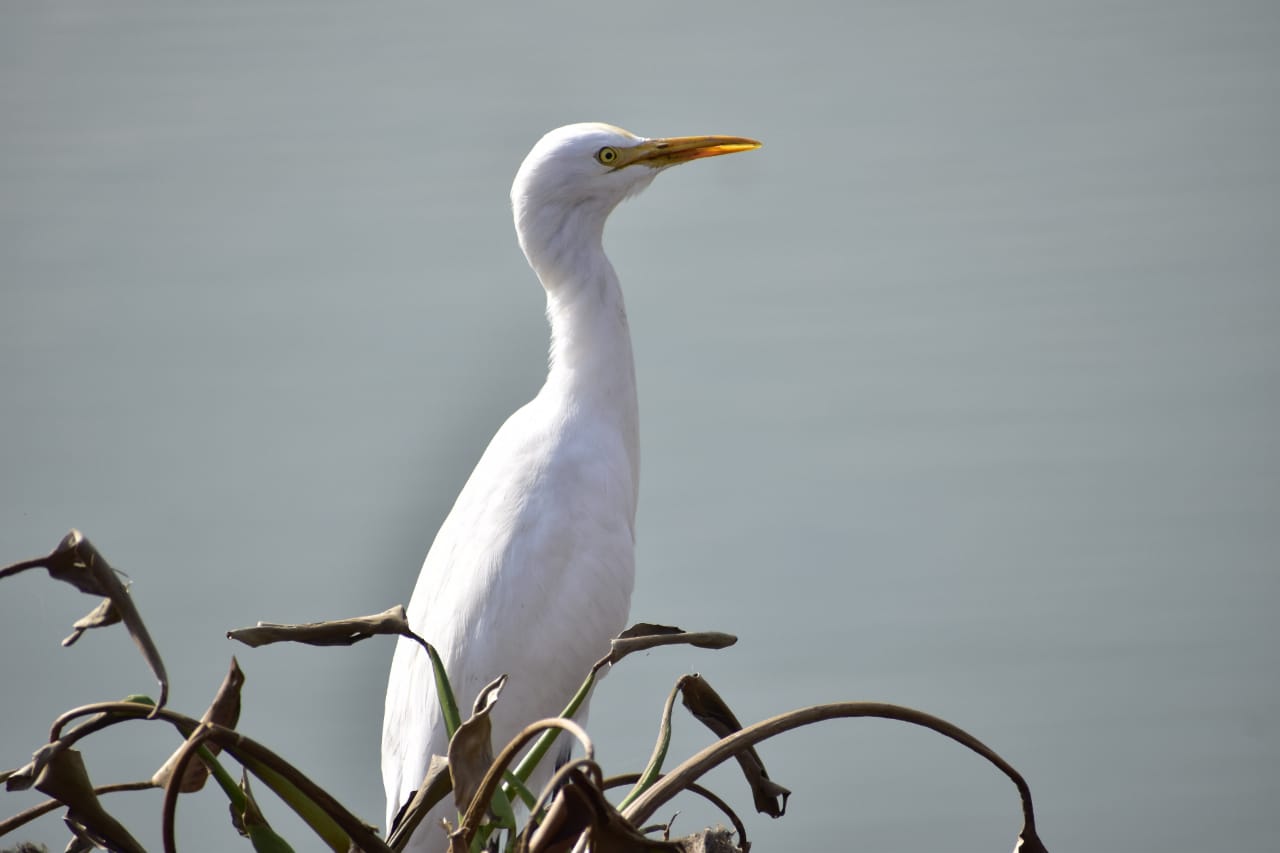

The lesser yellownape
The lesser yellownape (Picus chlorolophus) is a type of woodpecker which is a widespread and often common breeder in tropical and sub-tropical Asia, primarily the Indian subcontinent and Southeast Asia. It ranges from India, Bhutan, Nepal, Bangladesh and Sri Lanka eastwards to Thailand, Burma, Cambodia, Laos, Indonesia, Malaysia and Vietnam. Much of the scientific knowledge gathered about this species is sourced from formal studies in various parts of India.
Slaty-headed parakeet
The slaty-headed parakeet (Psittacula himalayana) is the only psittacid species to exhibit altitudinal migration. The species' range extends from Pakistan, to Western Himalayas in India through Nepal and Bhutan and up to the Eastern Himalayas in the northeastern Indian state of Arunachal Pradesh. They descend to the valleys in winter, approximately during the last week of October.


Red Vented Bulbul
The red-vented bulbul is easily identified by its short crest giving the head a squarish appearance. The body is dark brown with a scaly pattern while the head is darker or black. The rump is white while the vent is red. The black tail is tipped in white. The Himalayan races have a more prominent crest and are more streaked on the underside. The Race intermedius of the Western Himalayas has a black hood extending to the mid-breast.
The White Wagtail
The white wagtail (Motacilla alba) is a small passerine bird in the family Motacillidae, which also includes pipits and longclaws. The species breeds in much of Europe and Asia and parts of North Africa. It has a toehold in Alaska as a scarce breeder. It is resident in the mildest parts of its range, but otherwise migrates to Africa. In Ireland and Great Britain, the darker subspecies, the pied wagtail or water wagtail[2] (M. a. yarrellii) predominates. In total, there are between 9 and 11 subspecies


Scaly-breasted Munia
The scaly-breasted munia or spotted munia (Lonchura punctulata), known in the pet trade as nutmeg mannikin or spice finch, is a sparrow-sized estrildid finch native to tropical Asia. A species of the genus Lonchura, it was formally described and named by Carl Linnaeus in 1758. Its name is based on the distinct scale-like feather markings on the breast and belly. The adult is brown above and has a dark conical bill. The species has 11 subspecies across their range and differ slightly in size and colour.
This munia eats mainly grass seeds apart from berries and small insects. They forage in flocks and communicate with soft calls and whistles. The species is highly social and may sometimes roost with other species of munias. This species is found in tropical plains and grasslands. Breeding pairs construct dome-shaped nests using grass or bamboo leaves.
Red-whiskered BulBul
The red-whiskered bulbul (Pycnonotus jocosus), or crested bulbul, is a passerine bird found in Asia. It is a member of the bulbul family. It is a resident frugivore found mainly in tropical Asia. It has been introduced in many tropical areas of the world where populations have established themselves. It feeds on fruits and small insects. Red-whiskered bulbuls perch conspicuously on trees and have a loud three or four note call. They are very common in hill forests and urban gardens within their range.


Indian Pond Heron
The Indian pond heron or paddybird (Ardeola grayii) is a small heron. It is of Old World origins, breeding in southern Iran and east to the Indian subcontinent, Burma, and Sri Lanka. They are widespread and common but can be easily missed when they stalk prey at the edge of small water-bodies or even when they roost close to human habitations. They are however distinctive when they take off with bright white wings flashing in contrast to the cryptic streaked olive and brown colours of the body.
Sun Bird
The sunbirds and spiderhunters make up a family, Nectariniidae, of passerine birds. They are small, slender passerines from the Old World, usually with downward-curved bills. Many are brightly coloured, often with iridescent feathers, particularly in the males. Many species also have especially long tail feathers. Their range extends through most of Africa to the Middle East, South Asia, South-east Asia and southern China, to Indonesia, New Guinea and northern Australia. Species diversity is highest in equatorial regions.


Jungle Mayna
The jungle myna (Acridotheres fuscus) is a myna, a member of the starling family. It is found patchily distributed across much of the mainland of the Indian Subcontinent but absent in the arid zones of India. It is easily recognized by the tuft of feathers on its forehead that form a frontal crest, a feature also found in the closely related Javan myna and the pale-bellied myna which were treated as a subspecies in the past. The eyes are pale, yellow or blue depending on the population and the base of the orange-yellow bill is dark. It has also been introduced either intentionally or accidentally into many other parts of the world including Fiji, Taiwan, the Andaman Islands, and parts of Japan. The species has also spread out on its own to some islands in the Pacific.
Rusty-cheeked scimitar babbler
The rusty-cheeked scimitar babbler (Pomatorhinus erythrogenys) is a species of bird in the Timaliidae family native to South-East Asia. The species is olive-brown above with rusty coluring on the sides of the face, head, thighs, and flanks. The belly is mostly white. Sexes are alike. The beak is long and decurved in a scimitar shape. The rusty-cheeked scimitar babbler is found from the Himalayas to Myanmar. It inhabits habitats are subtropical or tropical moist lowland forests and subtropical or tropical moist montane forests at elevations up to 2600 m.


Common Hoopoes
Common Hoopoes are colourful birds found across Afro-Eurasia, notable for their distinctive "crown" of feathers. Three living and one extinct species are recognized, though for many years all were lumped as a single species—Upupa epops.
